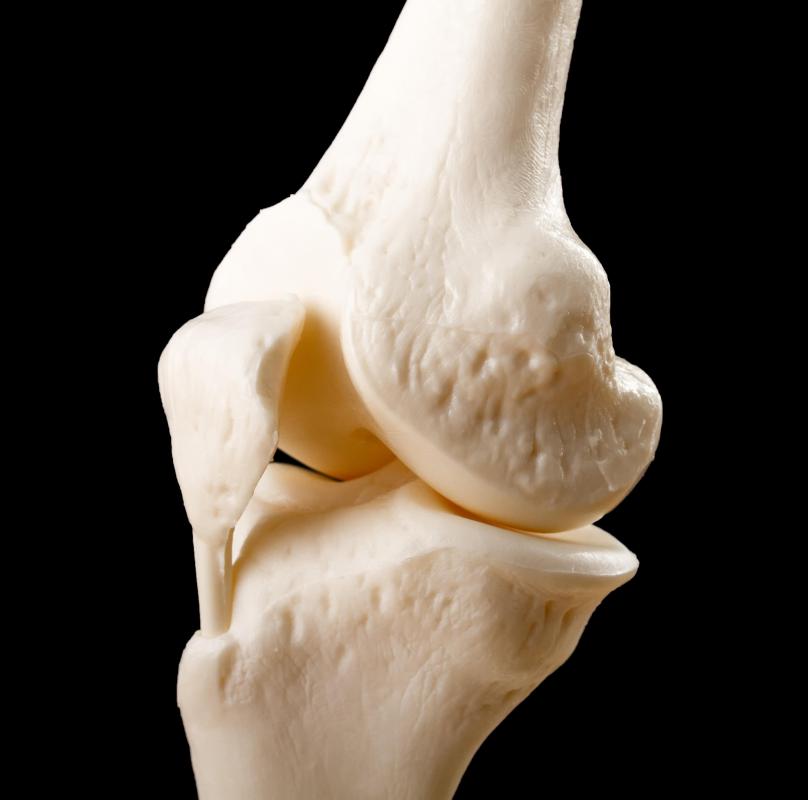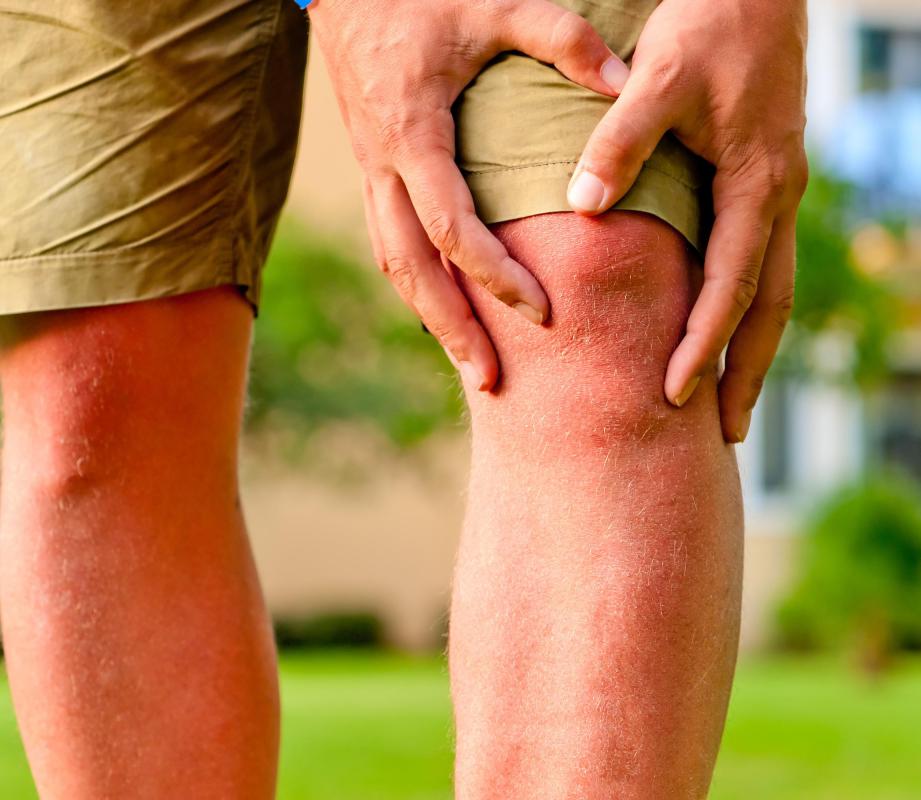At WiseGEEK, we're committed to delivering accurate, trustworthy information. Our expert-authored content is rigorously fact-checked and sourced from credible authorities. Discover how we uphold the highest standards in providing you with reliable knowledge.
What is Knee Taping?
Knee taping is a procedure that is employed when there is a need to protect the patella, or kneecap, from sustaining some type of injury. Taping can take place because of a preexisting problem that places some stress on the kneecap, such as tightness in the tendons and muscles around the patella, or as a means of limiting movement if the kneecap has begun to move in an unusual pattern when walking or running. Athletes as well as people who live sedentary lives may use knee taping to help limit damage to the knee joint.
Before a doctor will begin taping a knee, he or she will normally engage in what is known as tracking. Essentially, tracking is a process that allows the patient to go through a series of bending and straightening exercises while the physician watches the motion of the knee itself. This can make it possible to determine what is happening when the patient begins to feel pain. If the doctor notices that the tendons seem to be inflamed or that the kneecap moves into an awkward position during the bending and stretching, that is an indication that knee taping is likely a good idea.

Knee taping techniques are a little more comprehensive than simply grabbing a bandage and beginning to wrap it around the kneecap. In fact, two kinds of knee tape are used in the procedure. Each type of tape provides a specific function that will allow the patient to move with relative freedom without experiencing a great deal of pain.
To tape knees, begin by shaving the kneecap and the area immediately surrounding the knee. This will prevent any pulling or pinching of hair while the bandaging is worn. Shaving also provides the knee taping with a smooth surface that will allow the tape to adhere properly and keep the wrap in place throughout the day.

Once the knee is shaved, continue the knee taping by applying a layer of white protective tape to the knee joint. This tape will adhere to the skin and help to minimize any abnormal movement of the kneecap, as well as ease any pressure resulting from inflamed tendons and surrounding muscles. To complete the knee taping, apply a wrap of brown tape to the area. This tape stretches and also has some adhesive qualities that will also support limiting the movement of the kneecap.
When the knee taping is done properly, the patient will begin to feel a decrease in pain within a few moments. The bandage should be tight enough to provide support, but not so tight as to irritate the skin or create uncomfortable pressure on the kneecap itself. Physical therapists can teach patients how to perform knee taping quickly and efficiently, making it possible to still exercise the knee and recover over time.
AS FEATURED ON:
AS FEATURED ON:












Discuss this Article
Post your comments